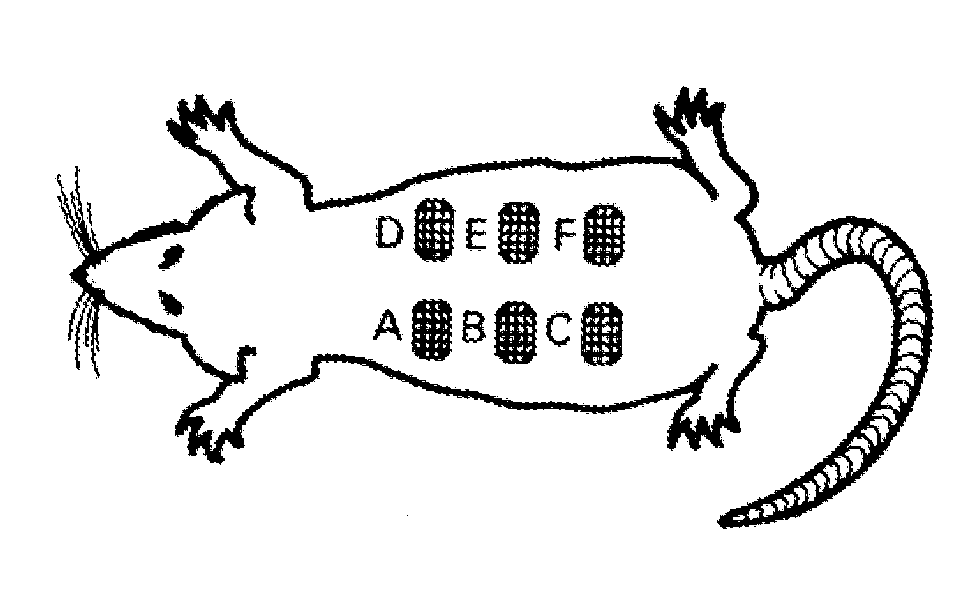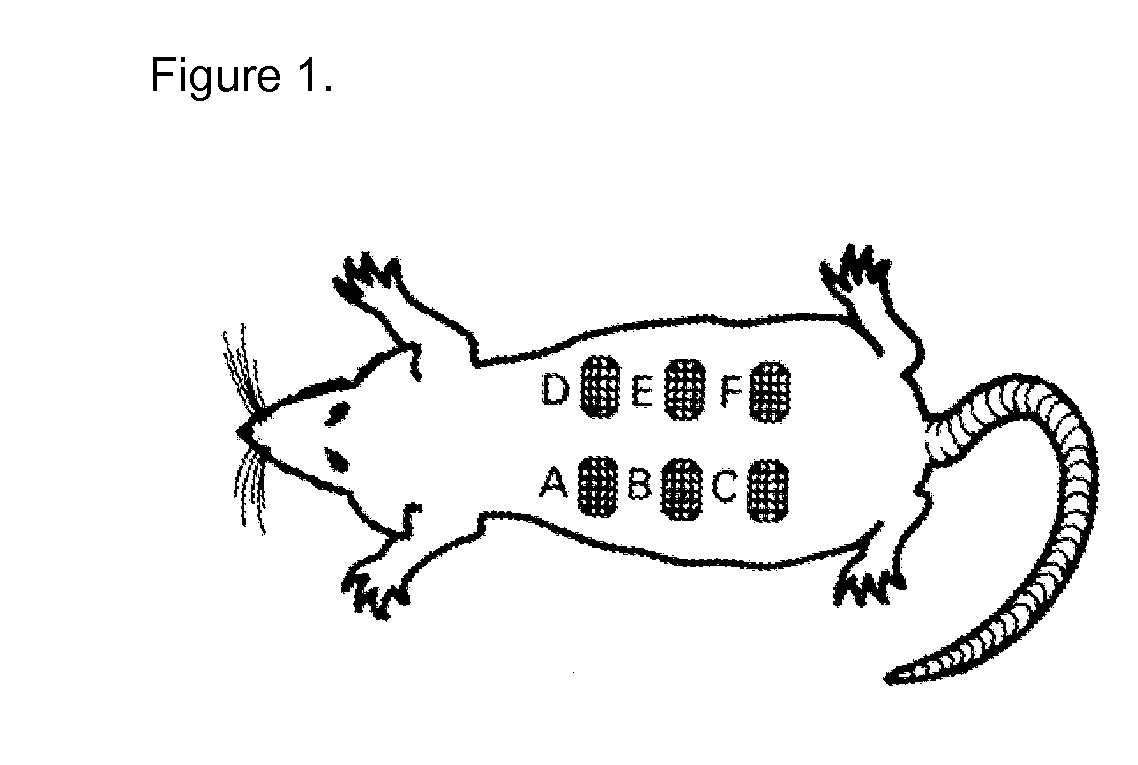Use of a topical composition containing epidermal growth factor (EGF) for diabetic foot amputation prevention
a technology of epidermal growth factor and topical composition, which is applied in the field of topical formulations, can solve the problems of not being able to generalize the treatment of diabetic foot, not being able to apply to all patients, and high cost and not being able to achieve the effect of preventing amputation
- Summary
- Abstract
- Description
- Claims
- Application Information
AI Technical Summary
Benefits of technology
Problems solved by technology
Method used
Image
Examples
example 1
Manufacturing of EGF-Loaded Liposomes
[0018]Phosphatidylcholine, at a concentration of 10 mg / mL, was dissolved in absolute ethanol in a 50 mL round-bottomed flask. The solvent was removed by rotary-evaporation until a dried lipid film was formed on the walls of the flask. To encapsulate EGF into liposomes, the dried lipid film was hydrated with a buffered aqueous solution containing EGF and homogenized by agitation. To decrease the size of the vesicles, the suspension was subjected to several extrusion passes through a 100-nm-pore-size polycarbonate membrane until the average size of the vesicles was about 100 nm. The suspension of EGF-loaded liposomes was centrifuged at 100 000×g for 40 min at 4° C. to separate non-encapsulated from encapsulated EGF. The supernatant was transferred to a fresh tube and the pellet was resuspended in phosphate-buffered saline at pH 7.2. The centrifugation step was repeated once more under the same conditions and the supernatant was transferred to a fre...
example 2
Determination of the Encapsulation Efficiency of Egf into Liposomes
[0021]To determine the incorporation efficiency of EGF into liposomes, liposome suspensions were centrifuged at high speed and the protein content of the obtained pellet (EGF-loaded liposomes) and supernatant (free EGF) was determined. The suspension of liposomes was centrifuged at 100 000×g for 40 min at 4° C. The supernatant was transferred to a fresh tube and the pellet was resuspended in phosphate-buffered saline at pH 7.2. The centrifugation step was repeated once more under the same conditions and the supernatant was transferred to a fresh tube and mixed with the supernatant of the first centrifugation step. The pellet (containing EGF-loaded liposomes) was resuspended in 500 μL phosphate-buffered saline at pH 7.2. Then, the protein of the pellet or the supernatant was extracted and separated from the lipids by adding 0.5% (v / v) Triton X-100 to the samples and subjecting them to reverse-phase high-performance li...
example 3
Determination of the Size and Morphology of Liposomes
[0022]Liposome samples were analyzed by transmission electron microscopy to determine the size and morphology of liposomes. Liposomes were visualized by negative staining with uranyl acetate. The negatively stained samples were observed under a transmission electron microscope Jeol-JEM 2000EX operating at 80 KV. The electron micrographs corresponding to each liposome preparation were digitalized by using a scanner and the diameter of liposomes was measured by using the DIGIPAT Version 3.3 software (EICISOFT, Havana, Cuba). The particle size was averaged over the total number of liposomes present in each micrograph and was expressed as the mean±the standard deviation of three independent determinations.
[0023]The preparations of deformable or traditional liposomes loaded with EGF were comprised of a homogenous population of vesicles of spherical or ellipsoidal shape. The average size of vesicles was 130±7 nm and 123±4 nm, for tradit...
PUM
| Property | Measurement | Unit |
|---|---|---|
| Dimensionless property | aaaaa | aaaaa |
| Dimensionless property | aaaaa | aaaaa |
| Mass | aaaaa | aaaaa |
Abstract
Description
Claims
Application Information
 Login to View More
Login to View More - R&D
- Intellectual Property
- Life Sciences
- Materials
- Tech Scout
- Unparalleled Data Quality
- Higher Quality Content
- 60% Fewer Hallucinations
Browse by: Latest US Patents, China's latest patents, Technical Efficacy Thesaurus, Application Domain, Technology Topic, Popular Technical Reports.
© 2025 PatSnap. All rights reserved.Legal|Privacy policy|Modern Slavery Act Transparency Statement|Sitemap|About US| Contact US: help@patsnap.com


